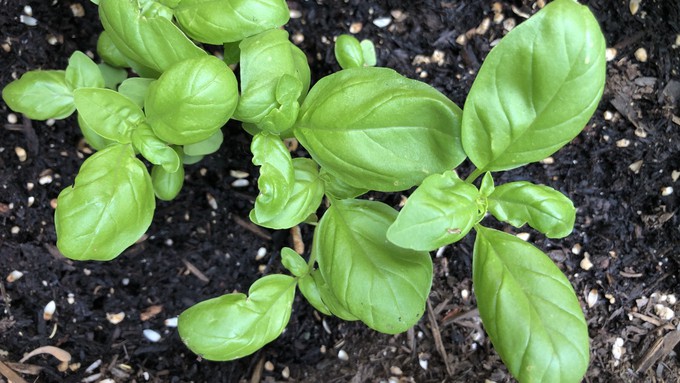
El Dorado County master gardeners spotlight these flavorful plants from garden to gourmet

Basil is likely the most popular annual herb to grow in a kitchen garden, but many other herbs are perennials. Learn about culinary herbs at an El Dorado master gardener class this weekend. Kathy Morrison
Learn how to make the most of these plants and grow your own in “Culinary Herbs: From Garden to Gourmet,” a free workshop presented by the UCCE master gardeners of El Dorado County.
Set for 9 a.m. Saturday, March 23, this three-hour class will be held at Blackstone Community Center in El Dorado Hills. It’s open to anyone (not just El Dorado County residents) and will inspire participants in the kitchen as well as the garden.
“No fat, low fat, no salt, watch the sugar; we’re constantly bombarded about how to eat healthier,” say the master gardeners. “One of the best ways to introduce healthy, delicious flavor into meals is to use herbs in our cooking. Many are easy to grow and preserve. They also make beautiful landscape plants and many of their flowers are edible.
“Join master gardeners Jan Keahey and Ada Brehmer to explore the herbs that grow well in our area, how to propagate and grow, when to harvest and how to preserve,” they add. “And you will be able to propagate herbs to take home with you.”
Blackstone Community Center is located at 1461 Blackstone Parkway, El Dorado Hills. Questions? Email mgeldorado@ucanr.edu.
For more on El Dorado master gardener programs: https://mgeldorado.ucanr.edu/.
Comments
0 comments have been posted.Sacramento Digs Gardening to your inbox.
Sites We Like
Garden Checklist for week of Nov. 3
November still offers good weather for fall planting:
* If you haven't already, it's time to clean up the remains of summer. Pull faded annuals and vegetables. Prune dead or broken branches from trees.
* Now is the best time to plant most trees and shrubs. This gives them plenty of time for root development before spring growth. They also benefit from fall and winter rains.
* Set out cool-weather annuals such as pansies and snapdragons.
* Lettuce, cabbage and broccoli also can be planted now.
* Plant garlic and onions.
* Keep planting bulbs to spread out your spring bloom. Some possible suggestions: daffodils, crocuses, hyacinths, tulips, anemones and scillas.
* This is also a good time to seed wildflowers and plant such spring bloomers as sweet pea, sweet alyssum and bachelor buttons.
* Rake and compost leaves, but dispose of any diseased plant material. For example, if peach and nectarine trees showed signs of leaf curl this year, clean up under trees and dispose of those leaves instead of composting.
* Save dry stalks and seedpods from poppies and coneflowers for fall bouquets and holiday decorating.
* For holiday blooms indoors, plant paperwhite narcissus bulbs now. Fill a shallow bowl or dish with 2 inches of rocks or pebbles. Place bulbs in the dish with the root end nestled in the rocks. Add water until it just touches the bottom of the bulbs. Place the dish in a sunny window. Add water as needed.
* Give your azaleas, gardenias and camellias a boost with chelated iron.
* For larger blooms, pinch off some camellia buds.
* Prune non-flowering trees and shrubs while dormant.
* To help prevent leaf curl, apply a copper fungicide spray to peach and nectarine trees after they lose their leaves this month. Leaf curl, which shows up in the spring, is caused by a fungus that winters as spores on the limbs and around the tree in fallen leaves. Sprays are most effective now.